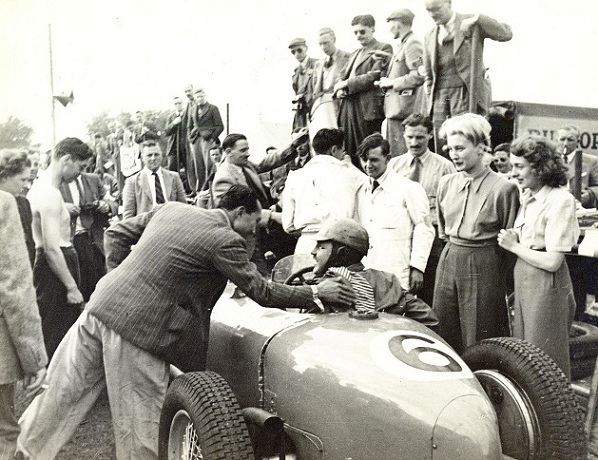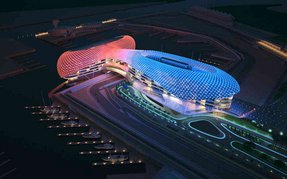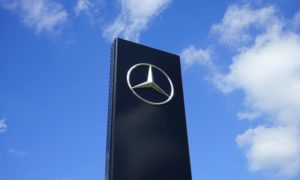TEAM PRINCIPALS: John BOOTH (Virgin), Tony FERNANDES (Lotus), Christian HORNER (Red Bull), Martin WHITMARSH (McLaren)
PRESS CONFERENCE
Q: A question to all. Basically looking back at last weekend and looking forward to this weekend. Tony, if I can start with you.
Tony FERNANDES: Well, for us it was a good step forward. I am very, very happy with the upgrade package. Unfortunately a slight mistake with Heikki’s (Kovalainen) car. Continuing with Monaco today it has been two good practice sessions and looking forward to the race.
Q: What is the big task this weekend?
TF: Well, as we have consistently said every race to be ahead of Virgin and be best of the new teams and try and finish both cars.
Q: Jarno (Trulli) seemed to have a problem this afternoon?
TF: No, the engine had come to the end of its life and we were running it out to the end but unfortunately it ran out slightly earlier than we anticipated.
Q: You are getting closer to those ahead of you. How is that working out? How much are you putting performance on the car? Have you solved reliability?
TF: Well, at the moment it appears reliability is quite good but we are hoping to add more upgrades between now and Turkey. A little bit more at Silverstone and I think we will close shop for the year. But it was good today. We didn’t seem to be that far away from the back end of the established teams and the drivers enjoyed it tremendously today. Heikki especially put in a lot of good lap times and good mileage.
Q: John, looking back last weekend and looking forward to this weekend?
John BOOTH: Barcelona was massive for us. The first time we got two cars to the finish in the fifth race. Not good enough and disappointing the previous four but a big relief for Barcelona. Continue the reliability here and then look for Turkey to start improving performance.
Q: How much of this is a steep learning curve here? Is it a steeper learning curve here than elsewhere?
JB: I don’t think so. For me it is not really a street circuit. It is a road course with lots of buildings around it. The atmosphere is fantastic but the challenges are just the same.
Q: The two car finished in Spain. Was that massively important?
JB: Massively important but we should have had those from race one. It took us five races to get there, far too long, but very happy we have achieved it.
Q: And again the balance of reliability and performance. How much performance are you putting on or are you still working on reliability?
JB: Ninety-nine per cent of our effort is on reliability but hopefully from this race forward we can start adding performance to it.
Q: Christian, last weekend you looked very good. And looking forward to this weekend?
Christian HORNER: Yes, Barcelona was a fantastic result for the team, particularly Mark Webber, who was in excellent form throughout the weekend. Barcelona being the start of the European season tends to be where the bigger teams bring reasonable size upgrades and we were no different to that. Everything we have added to the car this year had added performance. That was no different in Barcelona. To dominate the qualifying as we did was very satisfying and then Mark had a trouble free race. Sebastian, unfortunately, had a few more issues to deal with which he managed remarkably well. I think considering he had three brakes for the last 10 laps or so, to be doing the pace he was as we were just trying to slow him down enough with the big margin over Michael (Schumacher) behind him and then for once he was a little bit lucky with Lewis’s unfortunate incident which put him onto the podium. So despite a busy afternoon for him a first and third place, three points off the maximum score, was a great team result and testimony to the hard work that is going in at the factory at the moment. From a team point of view we don’t quite have the resource of the more established teams but the guys are working intelligently and tremendously hard in getting updates to the car in a timely fashion and that’s paying dividends.
Q: The car seems to be so good in qualifying but not always as good in the race. Is that something that is a concern?
CH: I think the races you are not pushing flat out every lap, so you have got an element of tyre management. With Mark we did a pit stop and then he had got 50 laps to go, the best part of an hour, on that set of tyres, so he was looking to manage the tyre situation. Sebastian unfortunately had an issue at his stop which allowed Lewis to jump past him and thereafter overtaking unfortunately as we all know, particularly at Barcelona of all places, is very, very difficult. The races tend to be more about tyre management especially with the current tyre compounds that we have as opposed to a sprint whereas qualifying is all about one lap ultimate performance.
Q: Was Sebastian’s problem something you hope was a one off? Have you managed to find out what the problem was?
CH: The problem was quite bizarre as basically the brake on the left hand side stopped working completely and the disc effectively split in half, straight down the middle of the spline, so effectively you have just got a spacer in there and so he had only got three brakes, so all the bias was towards the rear and he was using mainly the aerodynamics to stop the car and built some huge margin into his braking zones. With having fitted the option tyre at the end of the race on relatively light fuel load he actually did a purple sector in the middle sector with three brakes. It was ironic as I was joking with Adrian (Newey) the night before about his first car being an Austin Allegro which only had three brake discs and unfortunately in the race Sebastian’s car turned out to be similar to that. But he managed it incredibly well and to get the car home in third place was a valuable and brave performance by him.
Q: Martin, looking back at last weekend and looking forward to this weekend?
Martin WHITMARSH: Last weekend was disappointing in some ways. I think Lewis drove a great race and really deserved a second place. To lose that with a couple of laps to go is always disappointing. He had a wheel failure. The wheel failure was the consequence of backing off of the clamping load with the wheel nit. You try and investigate and it is always difficult to know exactly why that is. I think it is a range of things. Being on bottom end of tolerance. I think the air regulator that drives the air wrenches was perhaps erratic. The gun was within tolerance but at the lower end and maybe the gun stayed on a little shorter than it could have done, so all those things meant that the wheel was able to flex. When it does that it rubs on the brake drum, gets hot, leaves the properties of the magnesium and leads to a failure. Very disappointing as it was a strong race for him. He has not had the luckiest or more fortunate starts to the season but I am sure he will come back very strongly. With Jenson again another solid race to come through the race. He had a dash failure fairly early on. The dash as you would imagine has a number of different uses for the drive, including telling them when to shift. Although they learn that for a proportion of that race he was close behind another driver and if you are in a tow your shift points change, so he is having to adapt. It also meant that when you are changing switches on the steering wheel you don’t get the feedback to know they are in the right position and it also resulted in the pit stop where he didn’t have the normal launch procedure. He was unable to see the rpm. The rpm was a little high, so there was dragging of the clutch and rotating of the wheel, so the guys on the rear had to contend with that while trying to take the rear wheels off and on very quickly. So no fault of the driver or the crew but it was a slow stop which obviously put him behind Michael and it is difficult to pass Michael at the best of times. So disappointing. He was capable of going quite a lot quicker than Michael was driving but as Christian said it is very difficult to overtake on a circuit like Barcelona.
Q: Looking forward to this race?´
MW: We always look forward to it. I have been here with Lewis in Formula Three, GP2 and Formula One for wins. It is a circuit he has shown his mettle on. Jenson also, and it is also a circuit we have won 15 times, so it is a great circuit for McLaren and we would like to do it again. It looks very, very tight. No doubt Red Bull will be strong here but I think this afternoon showed it is quite close. The track is evolving very quickly. I don’t think we are getting the best out of the first lap with the tyres but we’ll see what happens. Qualifying is going to be a challenge here. We are going to make sure we get through Q1 and it is difficult for everyone. Not just for the quick drivers it is difficult for the slower cars and they presumably are going to spend all their time looking in their mirrors and that is not easy to avoid penalty. If you are a quick car you come across them fairly quickly. They have every right to be there but it will be a challenge. The drivers will have to try and show better respect for one another and it is going to be quite difficult. I am sure because of that challenge lots of cars will be out for a long period of the 20 minutes of Q1 trying to find a gap. But it is very difficult trying to reverse back and gap the car in front when you have got cars coming down behind you, so if you get yourself trapped amongst cars that are of a different pace even if you are a faster one or a slower one it is quite difficult to correct.
Q: One question about F-ducts. Some people are running it, some people aren’t. I think your team seem to be running it. Is it easy to run it here and is there a benefit?
MW: It is less of a benefit obviously. F-duct is something which will work better on the long straight than a circuit like this. It is a standard part of our car. We don’t have a non F-duct variety to fit in any case. Its deployment is less significant than it was, for instance, in Barcelona.
QUESTIONS FROM THE FLOOR
Q: (Joe Saward Grand Prix Special) You had a meeting about tyres in Spain. Can you name some names and tell us who is offering what and why it’s taking so long to get a decision?
MW: I think, if you go back a few weeks, Joe, it looked like there wasn’t really anyone who wanted to provide tyres, so the good news is that there appears to be several companies that are interested in supplying tyres to Formula One. I think those names have been widely speculated, I don’t think you need me to confirm them, and out of respect to those suppliers, we should wait until we’ve got a decision. A decision is necessary for everyone; it’s necessary for the teams because clearly we are designing our cars. We need technical information and the information or the selection is necessary for the tyre company because we need to make sure that they can get ready, particularly if they are new to the game.
Q: (Joe Saward Grand Prix Special) Without naming names, can you say what the benefits and the options are? One is expensive, one is cheap?
MW: Yeah, I think as you would imagine, established players with more technical capability cost more than the newcomers. So there’s a balance here and I think the teams will approach it in a responsible manner. Inevitably, in this climate, for all of the teams, having the lowest cost tyres is important. But at the same time, we mustn’t compromise on the technical information and the integrity of those tyres, so there’s a balance. I think the teams together have got to assess all of the new offerings and they’re changing on a daily basis. Once we’ve got the best offers then the teams need to come together, we need to make sure that the FIA is also happy with the route that we go forward with.
Q: (Joe Saward Grand Prix Special) Tony, from your point of view, what usually happens when you have big tyre manufacturers coming in is that you have the teams up the front not paying and the teams down the back paying. How would you feel about that?
TF: I think in my short period at FOTA, there is a pretty strong togetherness there to be honest. I think the will is that everyone will have a fair and equal deal. Certainly I’ve seen a lot of transparency under Martin, and I think it will be a pretty fair deal throughout for all teams.
Q: (Andrew Frankl Forza) As far as the weather this weekend is concerned, it seems a bit iffy. How long does it take to alter suspensions and moving from a wet race to a dry race? It looks as though it could be playing havoc and I’m wondering how you all feel about it.
CH: I think the problem is that you have got to have a bit of a crystal ball because your set-up on Saturday dictates… with parc ferme regulations, the only variable you’ve got for the race is your front wing. Putting on wet tyres, obviously you have a deeper gauge, it raises the ride height, so basically I’m sure that the weather conditions tomorrow (Saturday) will principally dictate what set-ups people are going to end up on Sunday with. Grid position is extremely important here, but to be honest, these days the difference between a wet set-up and a dry set-up isn’t that great and especially with the driver controls that are available to the drivers, such as the moveable front wing, they are able to have a degree of tuning within the cockpit.
JB: As Christian said, you have to be very brave to work towards a wet set-up 24 hours before the race, so unless it’s raining during qualifying, I’m sure everyone will have dry set-ups for the race.
Q: (Ian Parkes The Press Association) John, for a man from very humble beginnings, are you still pinching yourself that you’re in Formula One, particularly when you come to a venue like this?
JB: I suppose when I stop working so hard I will just take a breath and have a look around. At the moment it’s just the challenge we’re facing and I have to work very hard to overcome it. But it’s so great to be here.
Q: (Joe Saward Grand Prix Special) Christian, on the grid at every race Red Bull Racing has five guys who stand at the back of the car, on each of the cars, hiding something, or not, as the case may be. Are you hiding something, or are you just pretending?
CH: Obviously that’s to cover our variable ride-height system, Joe, you should know that! Obviously the cars on the grid is the closest that the various technical directors get to view the competition, and the fact that our guys chose to queue up and happen to be standing at the back of their car might merely be coincidence, but obviously the back of the cars are so sensitive now we try and make it as difficult for others to see as possible.
Q: (Joe Saward Grand Prix Special) Martin…
MW: I’m not interested in his backside, no!
Q: (Joe Saward Grand Prix Special) Martin, you have a chief engineer who has departed McLaren for places unknown. What are you going to do about that and will it affect your design process for next year?
MW: We’re talking about Pat Fry and Pat’s been with the company for about 18 years, so he’s made a great contribution to the team over a number of years. I think it was probably good for him, the right decision for him to take a bit of a break, take a breather. I think he’s worked very hard for the team for a number of years. Within our team, then, I think we’ve got quite a bit of a talent and depth, so in these situations it’s a great opportunity for someone younger, maybe hungrier, to come along and replace all of us. We’re all replaceable. I think the process will be the same but we’ve manned with fresh new engineers.
Q: (Ian Parkes The Press Association) Martin, when Christian said his team was not as well funded as the more established ones you raised your eyebrows as if to suggest that maybe they are. Would you tend to disagree with him that they are just as well-funded these days as McLaren or Ferrari?
MW: I think that whatever the level of funding, and I don’t know the funding, in terms of resources, the larger teams are pretty similar. The RRA (resource restriction agreement) is already having some impact on that and those teams will all become of fairly universal size and scope, I imagine. Red Bull is a well-funded, well-structured, well-led organisation. Winning in Formula One has never been more difficult, certainly in the 20-odd years that I’ve been involved in Formula One. There are some good teams and Red Bull is obviously one of those, Ferrari is another. We’ve obviously got Mercedes who have clear hunger to win as well. I think it’s going to remain very, very competitive in Formula One for a good many years to come, which is great for the sport.
Q: (Joe Saward Grand Prix Special) Teams have started looking now at their 2011 cars; I understand that some of the engineers have been quite shocked by the difference in terms of downforce that you’re getting without the double diffusers. Do you think that’s going to add a lot to the costs in the next few months, as you go through the research and try to get that back, or is that going to be less of a shocking change than they appear to say at the moment?
MW: I think that regardless of the opportunity to improve we’re all going to try as hard as we can. Not many Formula One teams save resources available, they spend it or use it, so I don’t think it will add to the cost but clearly moving away from double diffusers means that the rear end of the car will be very different and one would imagine that there’s quite a lot of work to be done in that area. I think that it’s a positive thing. I think that one of the challenges that Formula One has always is to control performance but also to enhance the opportunity to overtake. I don’t think any of us can, hand on heart, say we have the magic formula for that, because if you’ve got good drivers in good cars on the type of circuits we’re at, then it’s always going to be difficult but tendentially, if you can reduce the wake of the car, if you can reduce the effect that the wake has on you and you can reduce the aerodynamic downforce then one can imagine that’s going to allow the cars to be closer in the first place and hopefully facilitate more overtaking. I think it’s a good thing. I think Formula One was a little bit slow, frankly, in prohibiting double diffusers. Obviously this time last year there was a fair amount of controversy that caused teams to be dug in and not flexibly minded. We have now taken them out of the sport for next year. I personally think that’s a good thing, but it does mean that we’ve all got a relatively fresh start designing diffusers and the rear ends of our car.
CH: If you compare… this race last year was the first race that we introduced the double diffuser to our car and you compare where it’s evolved to today and it’s just monumental. Basic simulation suggests in the region of two seconds, maybe more. So it’s an enormous contributor to performance. Of course it’s had an enormous effect on the work of the overtaking working group because what they set out to achieve was significantly aimed around the wake of the car that Martin’s just referred to and obviously the double diffuser has had an enormous impact on that. It will be a big change and it’s going to be an interesting challenge. Engineers tend to be creative people and I’m sure they’ll claw back some of that, but it’s certainly a significant reduction in downforce for next year.
JB: If there are new regulations when they become clear it will create a lot of work, a lot of expense but if it meets the target of ending up making racing more entertaining, then it will be worth it.
TF: Well, for us, we’re not that heavily developed anyway, so it’s probably an advantage with the new regulations coming in and the quicker they come in then we will start developing the new car.






